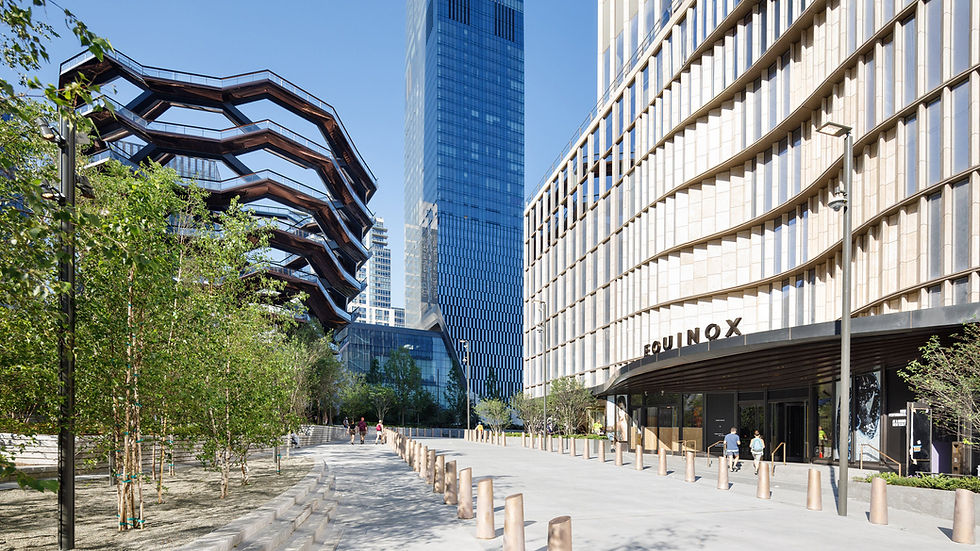Weekly Market Report - December 13th, 2019
- Dec 13, 2019
- 4 min read
4 Things NY’s Commercial Real Estate Industry is Watching for in 2020 Going into the next decade, the commercial real estate industry is watching for four things. One thing is the re-branding of Midtown. For most of 2019, the office leasing market has been great with record-high rents and better-than-expected leasing volume. With Facebook and Googles new major leases, the city is moving into the 2020’s on a good start. Midtown South is the new hot spot for millennial's, but Midtown and Downtown are more complicated. In the last quarter, for the first time in 10 years, the availability in Midtown was higher than Downtown. Midtown is down 10 million sf of tenancy, and it is now dealing with re-branding itself. Some millennial's are saying “Midtown is where fun goes to die”, so we will see how Midtown bounces back in 2020.
Amazon has signed a lease for new office space in Manhattan. It will house over 1,500 employees, and it will open in 2021 in a building near Hudson Yards. The company already has 3,500 employees in New York and Newark, NJ. This signing immediately brought back up the debate over whether tax breaks and other incentives were excessive. Almost a year ago, Amazon dropped out of its plans to create a new headquarters in Long Island City. The state and city offered $2.8 billion in incentives, which included $1.5 billion in tax breaks and grants. These incentives were supposed to promise more jobs and money for the communities, housing, schools and transits. However, people were outraged, and Amazon drew back. This time around, Amazon received no incentives. While Amazon coming to New York was always a given, people are glad this lease didn’t include any free money.
One of WeWork’s latest projects have stalled. Dock72, Brooklyn’s Navy Yards newest building, has given WeWork 220,000 sf and made it their anchor tenant. However, as time progresses, WeWork hasn’t show much progress in renting out spaces. Forty percent of space is left empty, and Dock72 was relying on the company to “quickly attract a constellation of tenants to help animate the property and create leasing momentum.” WeWork has shrugged off the slow leasing and says it will pick up when the food hall and gym open in January.
Last month, SoftBank’s investment in WeWork trickled a multi-billion-dollar write-down. In an apology written by the founder, Masayoshi Son, he said “there was problem with my own judgement”. SoftBank put $14 billion into WeWork, but now it is valued at less than $8 billion, and the company shares are down 30% from its peak in April. However, people close to the subject are saying SoftBank will come back full force with WeWork. To be successful and get out of the hole they are in, WeWork needs to overhaul the business plan, focus on the evolution of the corporate office market, pull back on unnecessary areas and slows down the pace of expansion. If this works, sources are saying WeWork’s revenue will rise from $720 million to $1.5 billion if it can push occupancy to 90%. By 2023, it can try to go public again, and in 2025, WeWork would have a value of $28.8 billion. SoftBank’s 80% stake would now be worth $19.1 billion.
The Democratic City Council is proposing to adopt new legislation that will require all new construction to use “bird-friendly” glass. This will be an effort to cut down on the 90,000-230,000 birds who die flying into buildings every year. If passed, which people suspect it most likely will, New York will be the largest city in the nation to require glass that is visible to birds. Long-term, this will have a significant impact on the birds. For example, the Jacob K. Javits Convention Center has glass imprinted with patterns that was installed in 2015. This reduced bird deaths by 90%. The legislation would require that at least 90% of the exterior of the first 75 feet of all new buildings or major renovations be constructed with materials that are visible to birds.
In today’s world, New York City will most likely be at the top. Based on commercial real estate sales data from the NYC Department of Finance, they have rounded up the top 10 most expensive streets and neighborhood for commercial real estate. The top three streets: Third Avenue, Lexington Avenue, and Fifth Avenue. Each median sales price was over $8 million with top deals from Chetrit Group’s, RCG Longview, and Savanna. However, Brooklyn is catching up, and Flatbush Avenue for the fourth most expensive street. The top three neighborhoods: Manhattan’s Financial District, Fashion District, and Central Business district. The Upper East Side follows with The Bronx’s Mount Hope/Mount Eden neighborhood. Manhattan is dominating with median prices ranging from $12 million to $44 million.









Comments